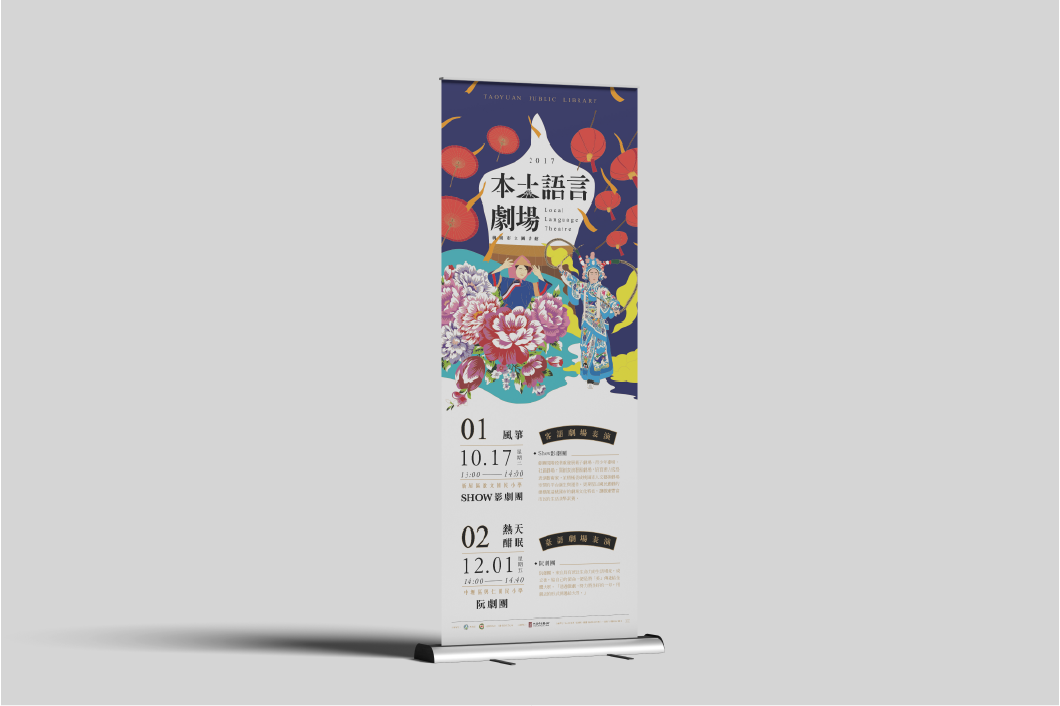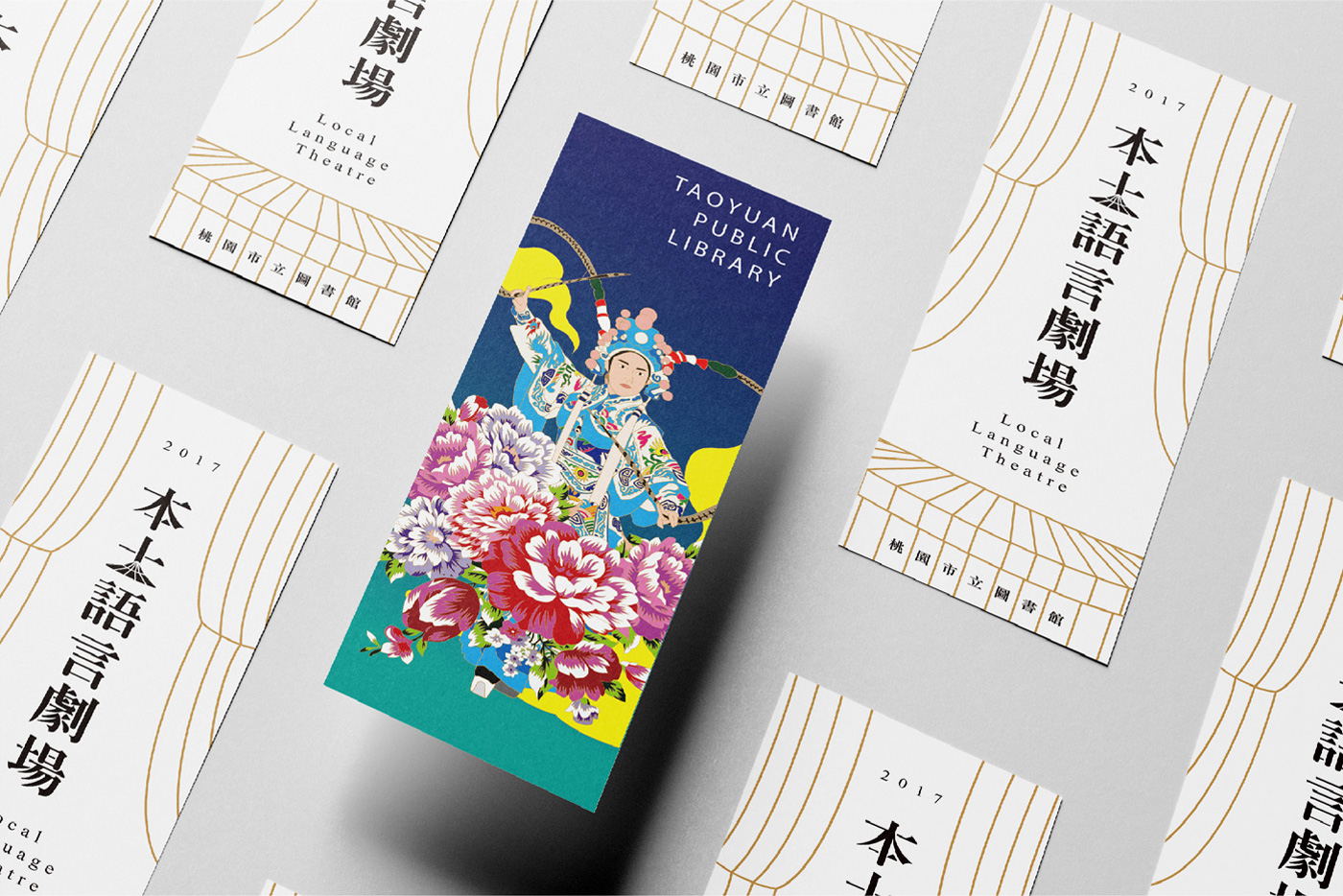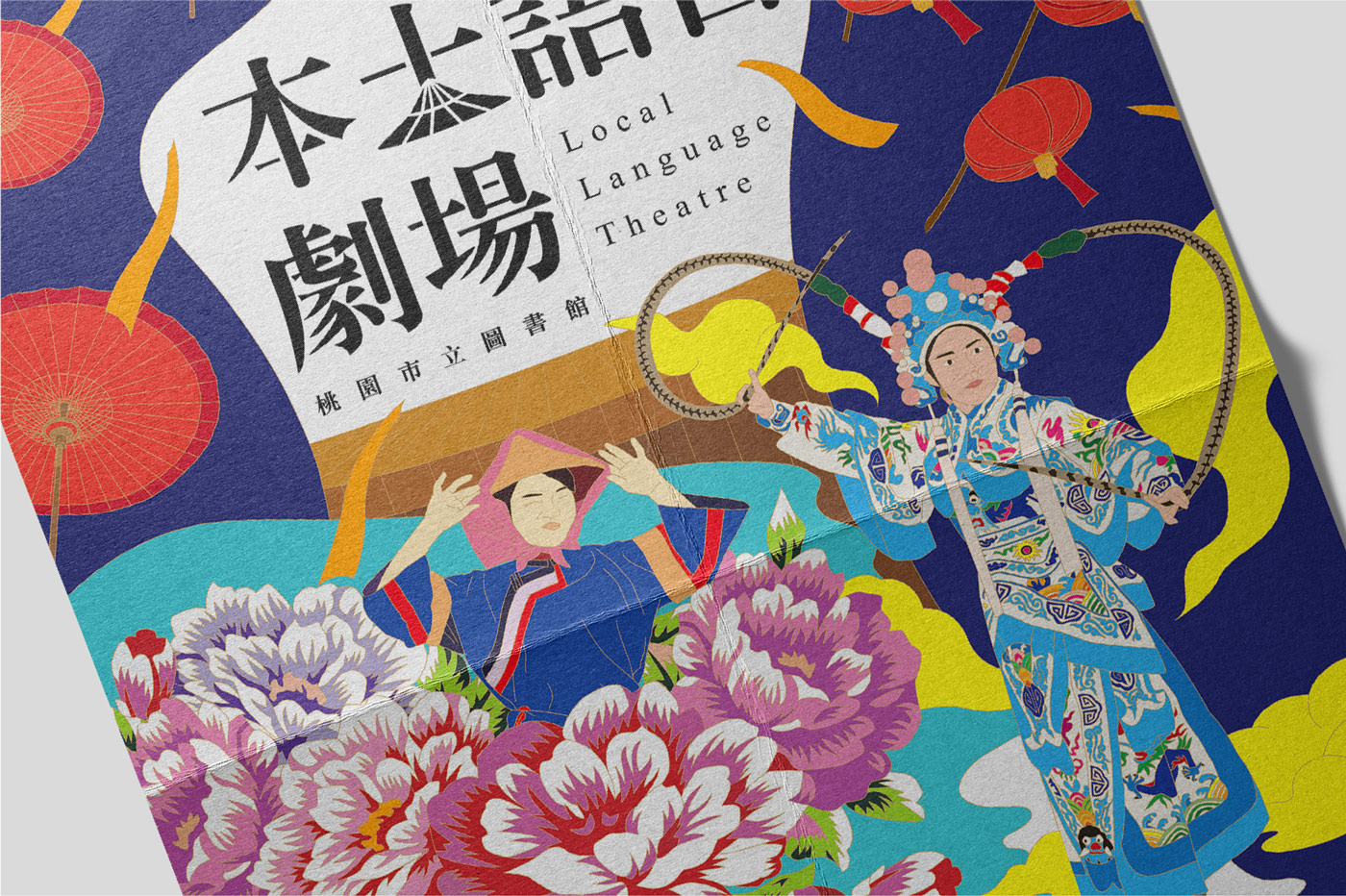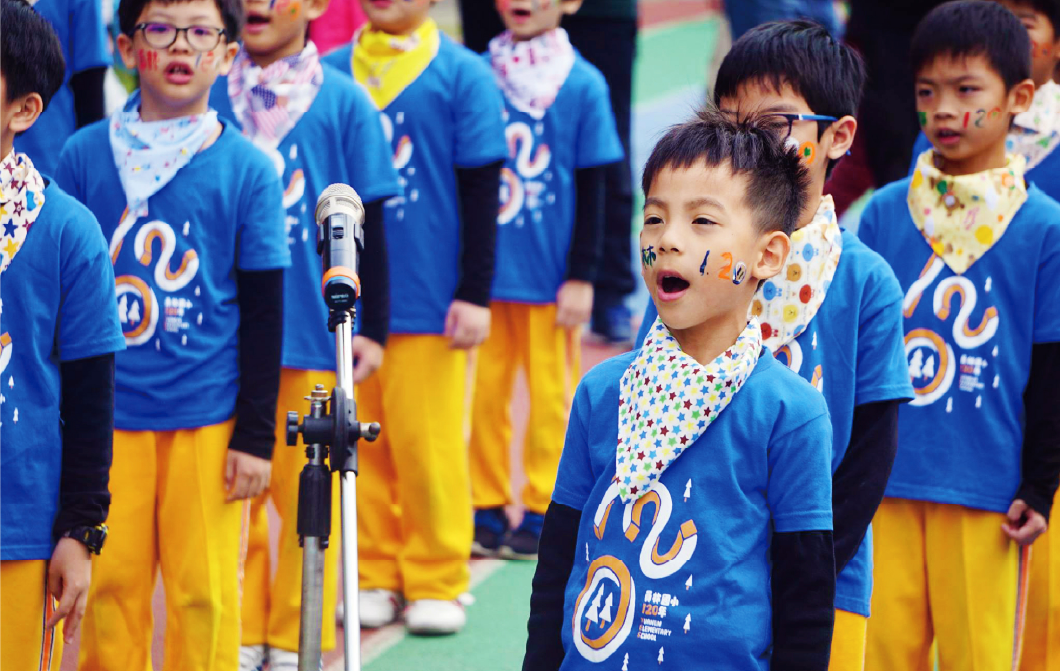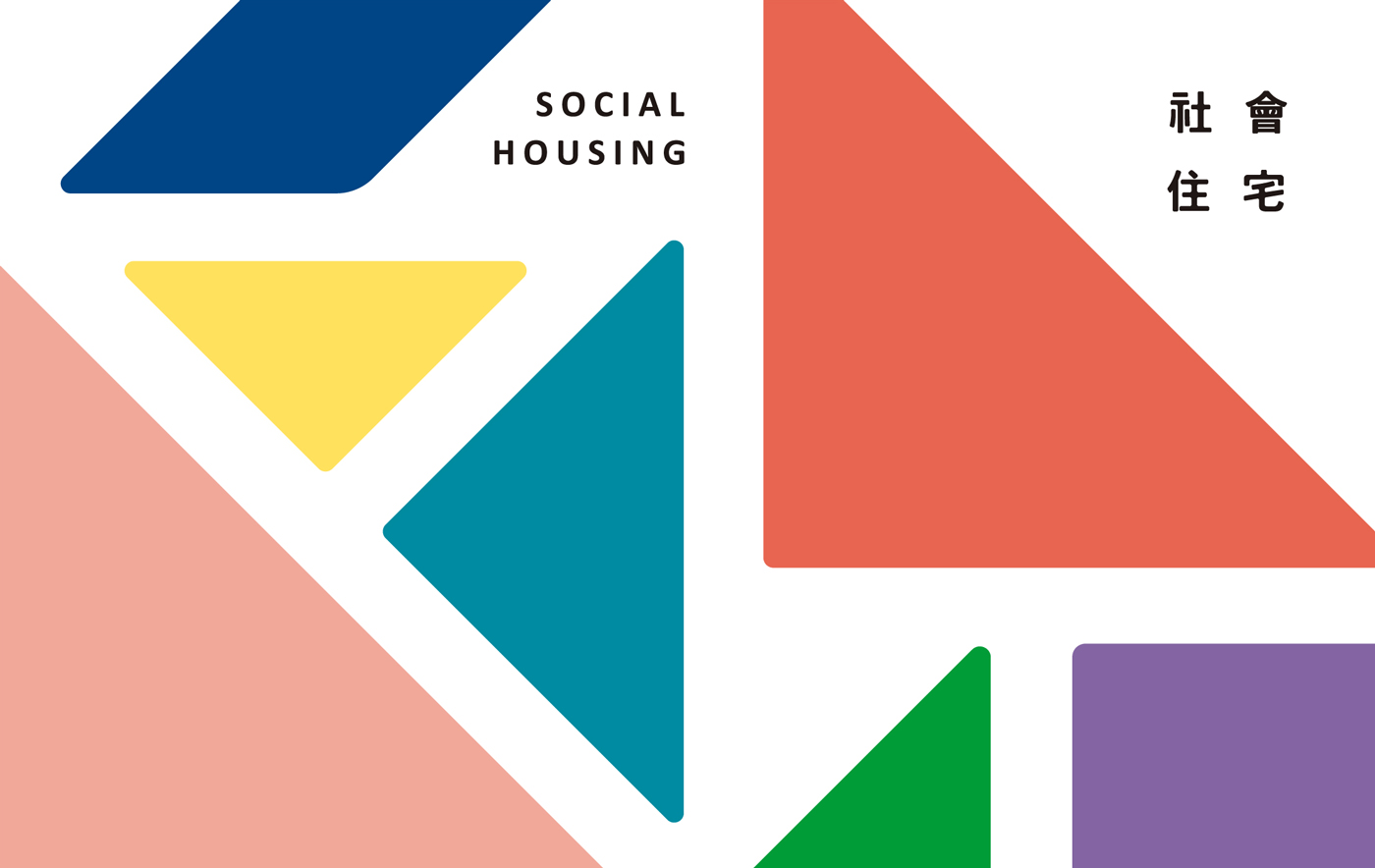
桃園市立圖書館-本土語言劇場活動
展覽設計規劃
設計概念
此次設計以劇場揭開序幕的方式做開頭,左右兩邊各自揭開夜幕,露出中間的表演舞台,並將視覺聚焦在本土語言劇場的標準字上,更為強調這次的活動主題,而左邊夜幕上的是代表客家文化的油紙傘、右邊是閩南文化的燈籠。
夜幕下方的視覺,則參考了客家傳統服飾的藍衫、客家花布,較為容易勾起民眾記憶裡客家文化意象,而閩南意象的部分,我思考著到底什麼能夠引起大家的共鳴,什麼才是屬於大家的回憶?這時小時候參加廟會時廟前酬神的歌仔戲劇團不禁讓我靈光乍現,深深感到「對﹗就是這了﹗」記憶裡,地方的鄉親父老婆婆媽媽都會拿著凳子或坐或站的欣賞歌仔戲,是屬於現在年輕輩已漸漸消失或沒有的童年,所以我想就以此來代表閩南文化劇場的意象,一定能夠拉起我們的回憶並藉此機會教育下一代。
Design
This design begins as if a theater curtain is rising, with the left and right sides parting to reveal the night sky, unveiling the central performance stage. The visual focus is placed on the main typography of the “Local Language Theater,” emphasizing the event’s theme. The left curtain features oil-paper umbrellas, representing Hakka culture, while the right side showcases lanterns, symbolizing Minnan (Southern Fujian) culture.
Below the night sky, the visual elements draw inspiration from traditional Hakka blue shirts and floral fabrics, evoking memories and imagery associated with Hakka culture. For the Minnan cultural representation, I pondered what could resonate with people and what might evoke shared memories. It was then that I vividly recalled the Gezai Opera performances in front of temples during local festivals from my childhood. The realization struck me: Yes, this is it! I remembered how local residents, especially elderly folks, would bring their stools, either sitting or standing, to enjoy the performances. This is a part of childhood that the younger generation is gradually losing touch with. Therefore, I chose this imagery to represent the Minnan cultural theater, hoping to not only revive our shared memories but also use this opportunity to educate the next generation.

